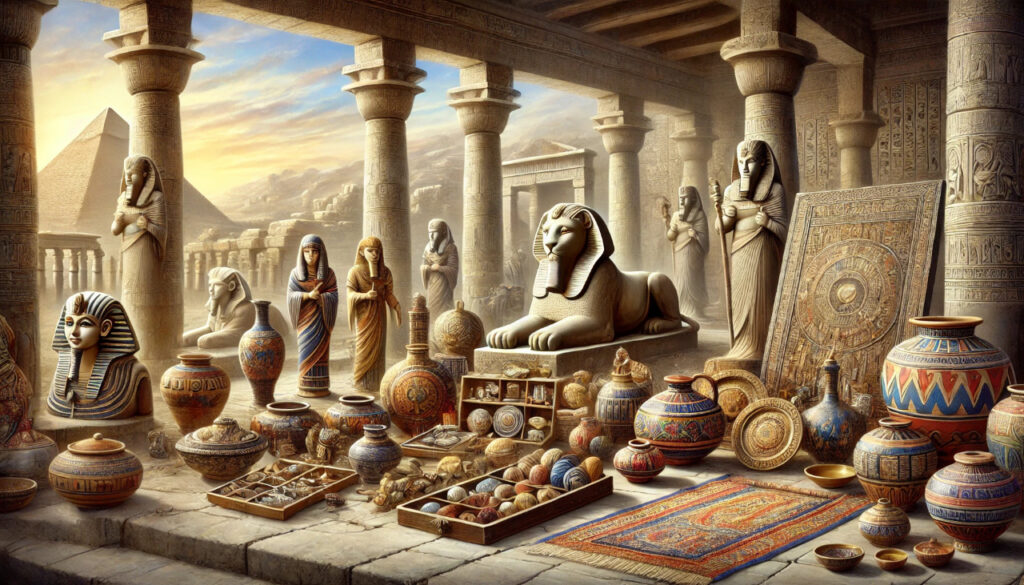Ancient Artz: A Window into the Past
Art is one of the most powerful forms of expression that humanity has ever known. It serves as a testament to our ability to create, communicate, and connect across generations. When we delve into the world of ancient artz, we uncover a rich tapestry of stories, beliefs, and cultures that have shaped human history. This article explores the diverse and fascinating world of ancient art, providing insights into its origins, characteristics, and significance.
Origins of Ancient Art
Ancient art dates back to the dawn of human civilization, with some of the earliest known examples dating back over 40,000 years. It began as a means of communication, storytelling, and spiritual expression, long before the advent of written language. The earliest examples of art were often created with simple tools and materials, such as charcoal, ochre, and stone. Early humans carved images onto cave walls, rocks, and bones, depicting animals, human figures, and abstract symbols.
One of the most famous examples of prehistoric art is the cave paintings found in Lascaux, France, and Altamira, Spain. These paintings, created around 15,000 to 17,000 years ago, feature vivid depictions of animals such as bison, deer, and horses. The purpose of these paintings remains a subject of debate among scholars. Some believe they were created as part of hunting rituals or to communicate with the spirit world, while others see them as early attempts at storytelling or marking significant events.
The Role of Art in Ancient Civilizations
As human societies grew more complex, so too did their art. In ancient civilizations, art played a crucial role in religion, politics, and daily life. It was used to honor gods and goddesses, celebrate victories, commemorate leaders, and convey societal values. The art of ancient Egypt, for instance, was deeply intertwined with religious beliefs. Egyptian tombs were adorned with intricate paintings and carvings that depicted the journey of the soul in the afterlife. These artworks were not mere decorations; they were essential components of the rituals that ensured safe passage to the afterlife.
Similarly, in Mesopotamia, one of the world’s earliest civilizations, art was used to convey the power and authority of rulers. The famous “Stele of Hammurabi,” a stone monument inscribed with the laws of the Babylonian king Hammurabi, is adorned with a relief sculpture of the king receiving his authority from the god Shamash. This not only reinforced the divine right of kings but also served as a visual representation of the laws governing society.
The Diverse Styles of Ancient Art
Ancient artz is incredibly diverse, reflecting the myriad cultures and societies that existed throughout history. Each civilization developed its own unique style, influenced by its geography, beliefs, and technological advancements.
Egyptian Art
Ancient Egyptian art is characterized by its strict adherence to form and proportion, often guided by a set of rules known as “canon.” Egyptian artists employed a distinctive style, with figures portrayed in a composite view — heads and legs in profile, while the torso and eyes were shown frontally. This style was used to ensure that the most recognizable features of a person or object were clearly depicted. The use of hieroglyphics, a writing system that combined logographic and alphabetic elements, further added a unique dimension to their art, where text and image were often inseparable.
Mesopotamian Art
Mesopotamian art, on the other hand, was more varied due to the region’s diverse cultures, including the Sumerians, Akkadians, Babylonians, and Assyrians. Art from this region includes cylinder seals, statues, and intricate relief carvings that depict gods, kings, and mythological creatures. The ziggurat, a massive terraced structure, is one of the most distinctive architectural forms of Mesopotamian art, symbolizing the link between the divine and the earthly realms.
Greek Art
Greek art is renowned for its emphasis on realism, harmony, and proportion. The Greeks believed in the ideal of the “perfect human form” and sought to represent it in their sculptures and pottery. The “Classical” period, which spanned from the 5th to the 4th century BCE, produced some of the most famous works of ancient art, such as the Parthenon sculptures and the statue of Zeus at Olympia. Greek art also had a profound influence on later cultures, including the Roman Empire, which adopted and adapted Greek styles.
Roman Art
Roman art, while heavily influenced by Greek traditions, also had its own distinctive features. Roman artists were masters of realism and used art to celebrate military victories, commemorate deceased family members, and glorify their emperors. Mosaics, frescoes, and monumental architecture, such as the Colosseum and the Pantheon, showcase the grandeur and engineering prowess of the Romans. Unlike Greek art, which often focused on idealized forms, Roman art was more concerned with capturing the individuality and character of its subjects.
The Significance of Symbolism in Ancient Art
Symbolism played a vital role in ancient art, allowing artists to convey complex ideas and narratives in a visual form. For example, in Egyptian art, the use of color was highly symbolic: red represented chaos or vitality, blue symbolized the divine, and gold was associated with the gods and immortality. Similarly, animals in ancient art often carried symbolic meanings; the lion was a symbol of strength and power, while the snake represented both danger and protection.
In ancient Greece, mythological themes were prevalent in art, serving both as a means of storytelling and as a way to explore human experiences and emotions. Sculptures and pottery often depicted scenes from the lives of gods, heroes, and mortals, illustrating virtues such as bravery, wisdom, and honor.
The Technological Advancements in Ancient Art
The creation of ancient art was not just a matter of creativity and skill; it also involved significant technological advancements. The development of tools, pigments, and techniques played a crucial role in the evolution of art. For example, the Egyptians developed methods for creating durable pigments from minerals, which allowed their wall paintings to survive for millennia. In Mesopotamia, artists used cylinder seals to create intricate patterns and designs in wet clay, an innovation that combined functionality with artistic expression.
The Greeks made significant advances in sculpture, particularly in the use of bronze and marble. Their understanding of anatomy and proportion allowed them to create lifelike statues that have become some of the most admired works of art in history. Meanwhile, the Romans perfected the art of mosaic, using small pieces of colored glass, stone, and ceramic to create detailed images that adorned the floors and walls of their homes and public buildings.
The Cultural Exchange and Influence of Ancient Art
Art has always been a form of cultural exchange, and ancient art is no exception. Throughout history, the interactions between different civilizations have led to the sharing of artistic techniques, styles, and motifs. The art of ancient Egypt, for example, influenced that of neighboring Nubia, as seen in the adoption of Egyptian motifs and techniques in Nubian pottery and sculpture.
The Greeks and Romans also heavily influenced each other’s art. After conquering Greece, the Romans absorbed much of Greek culture, including its artistic traditions. This led to the creation of “Greco-Roman” art, which combined elements of both cultures to produce a unique blend that continued to inspire artists for centuries.
Conclusion: The Legacy of Ancient Art
The legacy of ancient art is profound and far-reaching. It has provided us with a window into the beliefs, values, and daily lives of our ancestors, allowing us to understand how they saw the world and expressed their experiences. Ancient art has also influenced countless generations of artists, architects, and thinkers, shaping the development of art throughout history.
Today, the study of ancient art continues to offer new insights into human creativity and expression. By exploring the art of ancient civilizations, we can better appreciate the diversity of human culture and the common threads that unite us all. Whether carved into the walls of a cave or cast in bronze, ancient art remains a powerful reminder of our shared heritage and the timeless nature of artistic expression.


